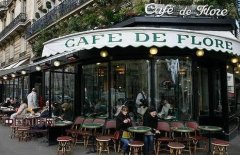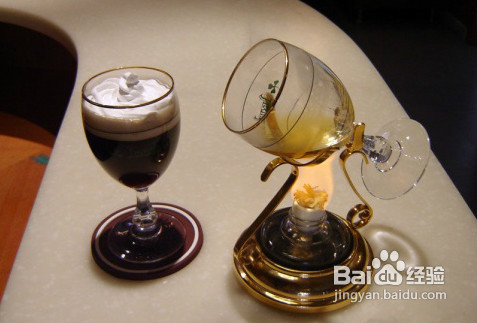Colonial Coffee Learn more about Colonial Coffee
-
The sixth History of European Culture on the Coffee Table Colonial Coffee Garden, a microcosm of cosmopolitanism

After 350 years of drinking a cup of coffee-colonial coffee gardens, a microcosm of cosmopolitanism, the coffee tasted by Europeans after the 17th century is no longer Arabian coffee beans from the East. When cafes quickly became popular in Europe, adventurous businessmen targeted the coffee trade, figuring out the huge profits behind growing and buying and selling coffee. The overseas of the old colonial empire of the Netherlands
2015-01-22 Coffee table Europe cultural history VI colonization coffee garden world doctrine one -
Colonial Coffee Garden, a microcosm of cosmopolitanism

After the 17th century, the coffee tasted by Europeans is no longer Arabian coffee beans from the east. When cafes quickly became popular in Europe, adventurous businessmen targeted the coffee trade, figuring out the huge profits behind growing and buying and selling coffee. The overseas pioneers of the old colonial empire of the Netherlands, the East India Company and the West India Company, were the first to act, risking being sentenced.
2015-05-07 Colonization coffee garden world doctrine one in miniature after the 17th century Europeans -
World boutique Coffee Culture History Colonial Coffee Garden

After the 17th century, the coffee tasted by Europeans is no longer Arabian coffee beans from the east. When cafes quickly became popular in Europe, adventurous businessmen targeted the coffee trade, figuring out the huge profits behind growing and buying and selling coffee. The overseas pioneers of the old colonial empire of the Netherlands, the East India Company and the West India Company, were the first to act, risking being sentenced.
2014-12-08 World boutique coffee cultural history colonization coffee garden 17th century after Europe -
A microcosm of cosmopolitanism in colonial coffee gardens

After the 17th century, the coffee tasted by Europeans is no longer Arabian coffee beans from the east. When cafes quickly became popular in Europe, adventurous businessmen targeted the coffee trade, figuring out the huge profits behind growing and buying and selling coffee. The overseas pioneers of the old colonial empire of the Netherlands, the East India Company and the West India Company, were the first to act, risking being sentenced.
2015-02-02 Colonization coffee garden world doctrine one in miniature after the 17th century Europeans -
A microcosm of cosmopolitanism in colonial coffee gardens

After the 17th century, the coffee tasted by Europeans is no longer Arabian coffee beans from the east. When cafes quickly became popular in Europe, adventurous businessmen targeted the coffee trade, figuring out the huge profits behind growing and buying and selling coffee. The overseas pioneers of the old colonial empire of the Netherlands, the East India Company and the West India Company, were the first to act, risking being sentenced.
2015-03-18 Colonization coffee garden world doctrine one in miniature after the 17th century Europeans -
Indonesian coffee was grown in 1696 during the Dutch colonial period, and Arabica was planted in the early days.

Coffee workshop (Wechat official account cafe_style) Coffee was first grown in Indonesia during the Dutch colonial period in 1696, when Dutch colonists introduced Arabica coffee beans to Jakarta, the present-day capital of Indonesia, on the island of Java. With the continuous growth of coffee trade, coffee was grown from claws in the 18th century.
2019-05-05 Indonesia coffee cultivation Holland colonization period 1696 early all -
Colonial History of Coffee Manor in Tanzania

Tanzanian coffee has also been developed in the hands of German and British colonists and has long been loved by Europeans and squeezed into the ranks of famous products. The most favorable factors that make Tanzanian coffee famous are Hemingway and his novels. Hemingway has been integrated with Tanzania and Mount Kilimanjaro since he embarked on his career as a writer in France. Hemingway became famous
2016-06-07 Tanzania coffee manor colonization history also in Germany -
A microcosm of coffee culture colonization coffee garden cosmopolitanism

After 350 years of drinking a cup of coffee-colonial coffee gardens, a microcosm of cosmopolitanism, the coffee tasted by Europeans after the 17th century is no longer Arabian coffee beans from the East. When cafes quickly became popular in Europe, adventurous businessmen targeted the coffee trade, figuring out the huge profits behind growing and buying and selling coffee. The overseas of the old colonial empire of the Netherlands
2014-11-04 Coffee Culture Colonial Coffee Coffee World -
Colonial Coffee Garden, a microcosm of cosmopolitanism

Modern people can drink coffee as much as they like, but there has been a rough ban on coffee in history. It is said that the world's first ban on cafes can be traced back to the holy place of Mecca in 1511. The rulers thought that the parties on the coffee shop table would threaten their authority and closed all the cafes in the city. As a result, the ban was repealed automatically because the Sultan fell in love with drinking coffee. At the beginning
2015-11-09 Colonization coffee garden world doctrine one microcosm modern people can do whatever they want. -
Introduction to Fine Coffee with rich flavor and taste in Lazmus Manor, Colombia

In 1501, the Spaniard R.de Bastidas first reached the northern coast of Colombia and founded the city of Santa Marta in 1525. In 1533, P.de Eredia established Cartagena. In 1535, G. Simone de Xada led the Spanish colonial army into the interior of Colombia, conquered the Chibucha, established the city of Bogota, and Colombia became a Spanish colony. At the beginning
2016-09-01 Aroma rich Columbia Raz Moss Manor coffee flavor taste special -
Introduction of high-quality coffee beans in Colombian coffee producing area with strong taste

In 1501, the Spaniard R.de Bastidas first reached the northern coast of Colombia and founded the city of Santa Marta in 1525. In 1533, P.de Eredia established Cartagena. In 1535, G. Simone de Xada led the Spanish colonial army into the interior of Colombia, conquered the Chibucha, established the city of Bogota, and Colombia became a Spanish colony. At the beginning
2016-08-15 Taste strong Columbia coffee producing area flavor characteristics boutique coffee beans -
Taste characteristics of manors in Colombian coffee flavor producing areas introduction of fine coffee beans

In 1501, the Spaniard R.de Bastidas first reached the northern coast of Colombia and founded the city of Santa Marta in 1525. In 1533, P.de Eredia established Cartagena. In 1535, G. Simone de Xada led the Spanish colonial army into the interior of Colombia, conquered the Chibucha, established the city of Bogota, and Colombia became a Spanish colony. At the beginning
2016-08-29 Columbia coffee flavor producing area manor taste characteristics boutique coffee beans -
Introduction to the Flavor and Taste characteristics of Columbia Coffee Manor

In his letter from Jamaica in 1815, Bolivar envisioned that when South America was liberated from Spanish colonial rule, New Granada and Venezuela should form a country, named Colombia. In August 1819, Bolivar's Patriotic Army defeated the Spanish colonial army at the Battle of Boyaca and liberated Bogota. So, New Granada and Venezuela
2016-08-15 Columbia Coffee Manor producing area Flavor palate characteristics introduction Raz Mo -
Introduction to the flavor and taste of the coffee growing environment in Lazimus Manor, Colombia.

In his letter from Jamaica in 1815, Bolivar envisioned that when South America was liberated from Spanish colonial rule, New Granada and Venezuela should form a country, named Colombia. In August 1819, Bolivar's Patriotic Army defeated the Spanish colonial army at the Battle of Boyaca and liberated Bogota. So, New Granada and Venezuela
2016-08-18 Taste rich Columbia Raz Moss Manor Coffee planting Environment production -
Introduction to the varieties and brands of coffee flavor and taste in Santa Rita Manor, Colombia.

The indigenous people of pre-independence Colombia were the Chibucha Indians. They use wooden and stone tools to grow crops such as corn and cassava and weave cotton cloth. This area is a famous gold mining area in ancient South America, and the Chibucha people have a high level of gold decoration art. In 1501, the Spaniard R.de Bastidas first arrived on the northern coast of Colombia.
2016-08-12 Taste rich Columbia Santa Rita Manor Coffee Flavor producing area -
Introduction to the planting Environment of Hope Manor Coffee varieties in Columbia Coffee producing area with pleasant Climate

In his letter from Jamaica in 1815, Bolivar envisioned that when South America was liberated from Spanish colonial rule, New Granada and Venezuela should form a country, named Colombia. In August 1819, Bolivar's Patriotic Army defeated the Spanish colonial army at the Battle of Boyaca and liberated Bogota. So, New Granada and Venezuela
2016-08-20 Climate Human Columbia Coffee Origin Hope Manor Variety planting Ring -
A brief introduction to the Origin, Development, History and Culture of Fine Coffee beans in Santa Rita Manor, Colombia

In order to better promote Colombian coffee, the Colombian Coffee Growers Association (FNC) launched a live-action version of Juan based on this image. Waldez. Now the uncle is the third-generation real-life version. Juan on behalf of Colombian coffee farmers? Uncle Valdez, as the ambassador of Colombian Coffee, will travel around the world to promote Colombian Coffee.
2017-03-13 Elegance fragrance Columbia Santa Rita Manor boutique coffee beans origin development -
Colombia coffee with excellent quality and delicious taste

When news of Napoleon I's invasion of Spain reached Colombia in 1808, the people there immediately launched an independence movement. On July 20, 1810, Bogotá erupted in a massive uprising against Spanish colonial rule, arresting the governor of New Granada. In November 1811, representatives of the provinces organized a congress in Bogotá, and the United Provincial Government of New Granada was established and proclaimed on November 11.
2016-08-22 Quality Beautiful Colombia Coffee Flavor Taste Manor Region Characteristics Medium -
Introduction to the characteristics of the Coffee Flavor of Santa Rita Manor in Colombia

In his letter from Jamaica in 1815, Bolivar envisioned that when South America was liberated from Spanish colonial rule, New Granada and Venezuela should form a country, named Colombia. In August 1819, Bolivar's Patriotic Army defeated the Spanish colonial army at the Battle of Boyaca and liberated Bogota. So, New Granada and Venezuela
2016-08-20 Sweet Columbia Santa Rita Manor Coffee Flavor Taste producing area characteristics -
Introduction to the characteristics of coffee flavor and taste varieties in Santa Rita Manor, Colombia.

After the news of Napoleon I's invasion of Spain in 1808 spread to Colombia, the people of that place immediately launched an independence movement. On July 20, 1810, a large-scale uprising against Spanish colonial rule broke out in Bogota and the Governor of New Granada was arrested. In November 1811, representatives from all over the world organized Congress in Bogota and established the New Granada Joint Provincial Government, which was announced on November 11.
2016-09-03 Aftertaste endless Columbia Santa Rita manor coffee flavor taste variety
